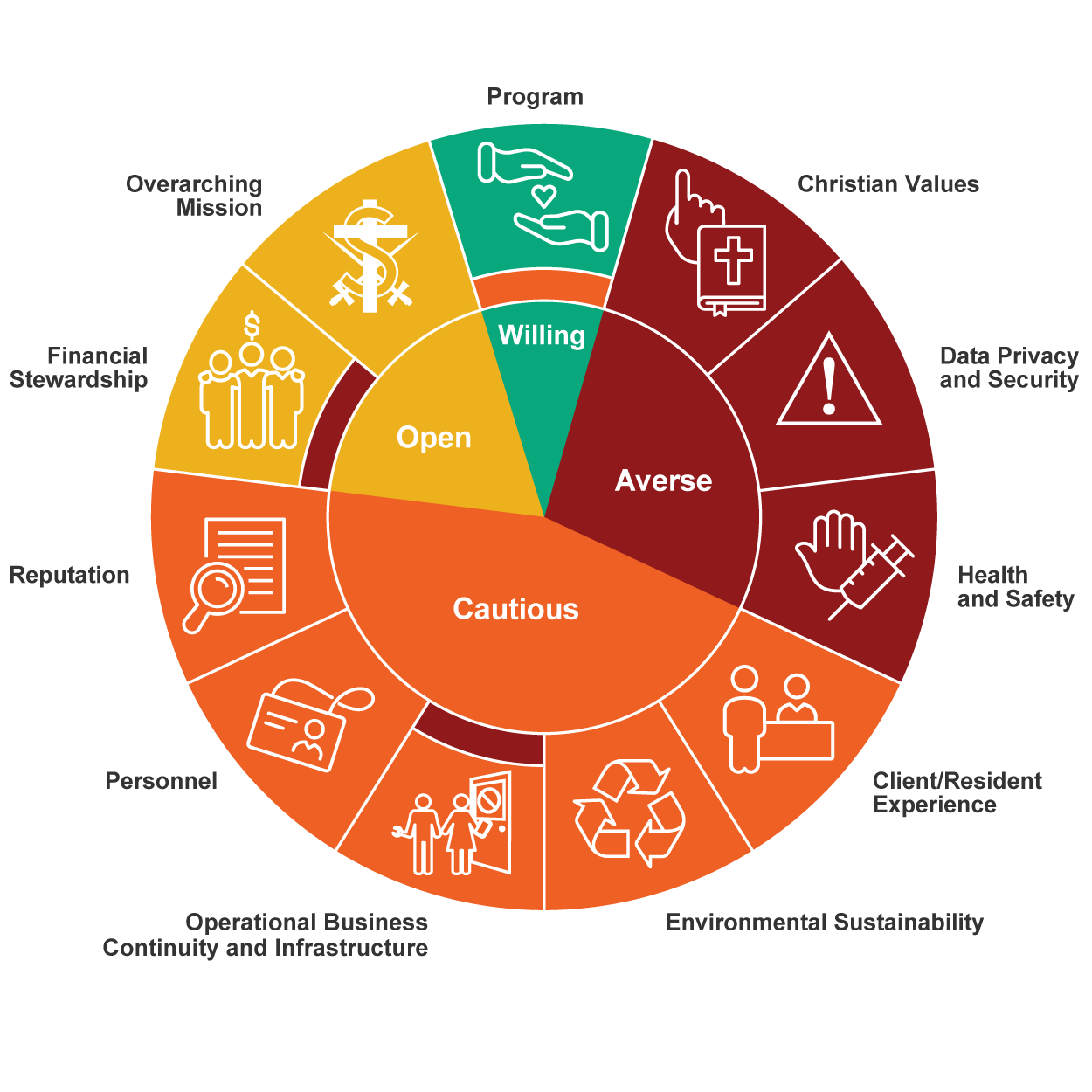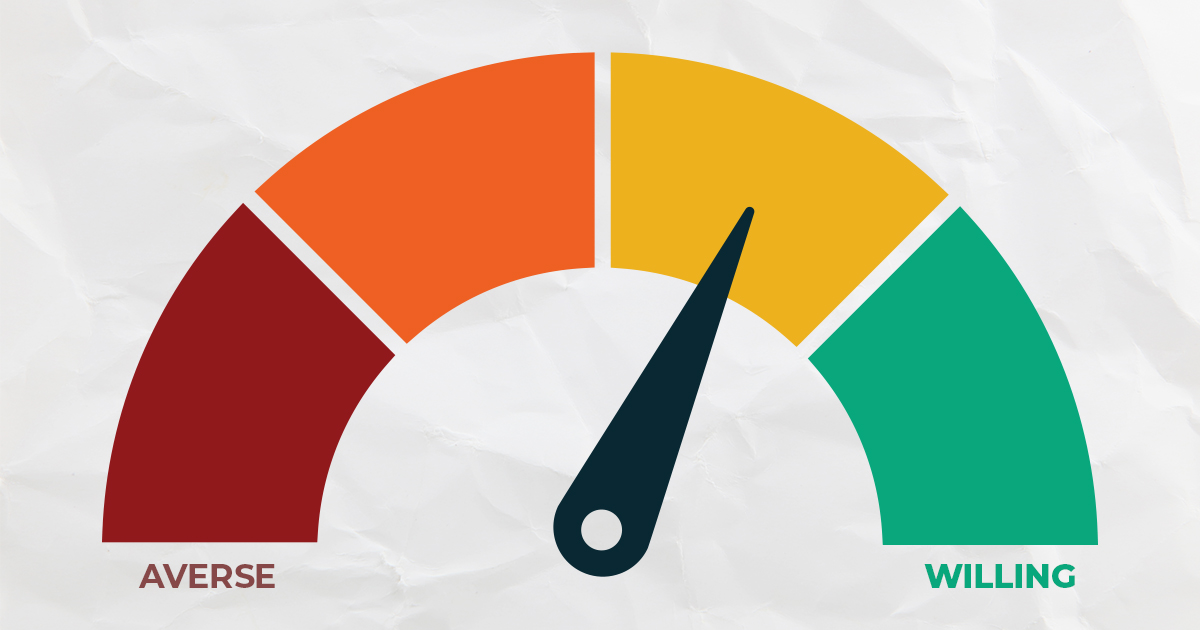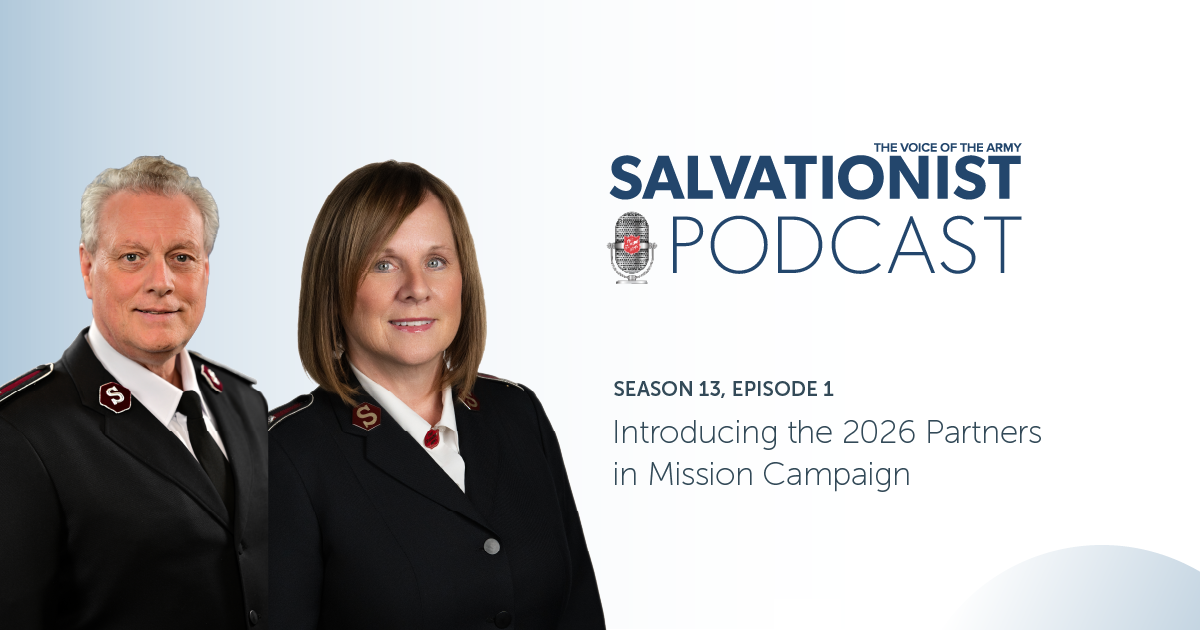Click the image below to explore the interactive risk appetite tool (image will open in a new tab) .
The first steps of William and Catherine Booth, co-Founders of The Salvation Army, were emblazoned with risk as they brought their faith into the most deprived areas of London, England, delivering Christ-centred love to people in need. Their good works were risky. Not only were they targeting the vulnerable, but they were vulnerable themselves.
When the Army entered Canada in 1882, high levels of risk were also prevalent as Salvationists were beaten and jailed for their work in the streets. Their perseverance and willingness to navigate risk through uncertain times led to the eventual acceptance of social services provided by the Army.
Did our Founders and early pioneers realize the risks they were taking as they took the pulpit to the paupers? Did they manage risk and assess their risk appetite before stepping out on their global crusade? It could be presumed that in the front-line moment, the only appetite being assessed was the hunger of others, but risk was surely being evaluated and considered which led to the Army’s exponential growth over the years.
Risk Management
Today, the Army continues to take risk but within a broader external and internal context that involves many considerations prior to action. While it is appreciated that we continue to engage in and accept certain risk-prone activities due to the nature of our mission, we do so within a risk framework ensuring informed decision-making.
The Salvation Army’s enterprise risk management (ERM) practice is essential to the success of where the Army sits today as one of the leading providers of social services in Canada. ERM lays the foundation for achieving strategic priorities through activities that identify, assess, manage and report risk within our risk appetite or tolerance. As volunteers, employees, cadets, auxiliary-lieutenants, auxiliary-captains, officers and management of the Army, we have a shared responsibility to effectively identify, manage and report actual or potential risk. But what is risk appetite and how do we assess it?
Risk Appetite
During 2022, the Risk Management Committee completed a territorial consultation process led by Tracy Fattore, chief risk officer, to update the risk appetite for the organization that qualifies the different levels of risk appetite according to the Army’s key activities and functions. The committee landed on four risk appetite levels: Averse, Cautious, Open and Willing.
“We must be prepared as an organization to know when to take, or not take, calculated risks that align with our mission, vision and values and put us in a position of growth and modernization to reach our strategic goals,” says Fattore. “Risk culture sits at the heart of human decisions and every day we are making decisions that impact the lives of others. This new interactive visual graphic concretely lays out the risk appetite for the Army and can be used as a tool to help us maximize our impact on decisions while fostering an informed risk culture within The Salvation Army.”
From leadership to the front lines, managing risk while understanding and identifying the levels of risk associated to key activities will help shape critical pathways and guide our mission, but what does this look like in practice?
The Army’s social mission ministry units provide a multitude of programs and services for those in need. You can see on the visual graphic when hovering over “Program,” our community staple, that the Army is willing to accept risks and pursue opportunities that indicate return on investment, and in duality, leans toward cautiously taking risk when developing programs involving vulnerable populations. It is important to note that in parallel we must consider how the risk appetite range can intersect through key activities. Although we may be willing to expand new program opportunities, we still need to understand how this willingness cross cuts with other key activities such as the health, safety and well-being of our people.
The British Columbia Division recently underwent a full risk assessment utilizing the ERM principles and framework to see where the division can innovatively push forward, and in parallel, prevent decline. Lt-Colonel Jamie Braund, divisional commander, spearheaded the consultative analysis and the division is using the risk framework as a reference to guide the process.
“We talk and think of risk as a whole Army and then within our divisions,” says Lt-Colonel Braund. “This process may or may not look the same throughout, and we need to harmonize our innovative growth and pre-empt decline. Having the ERM framework with the new risk appetite positions of the organization is helping us in our strategic decision-making process to position our division for innovative growth and to continue on our pathway to be fit for purpose.”
Stewardship
Understanding and adopting the risk management principles and appetite of the Army will allow us to confidently lean into our core value of “Stewardship—We responsibly manage the resources entrusted to us,” and enable us to be fit for mission to share the love of Jesus Christ, meet human needs and be a transforming influence in the communities of our world.
Illustration: PeterPencil/Digital Vision Vectors via Getty Images










Leave a Comment